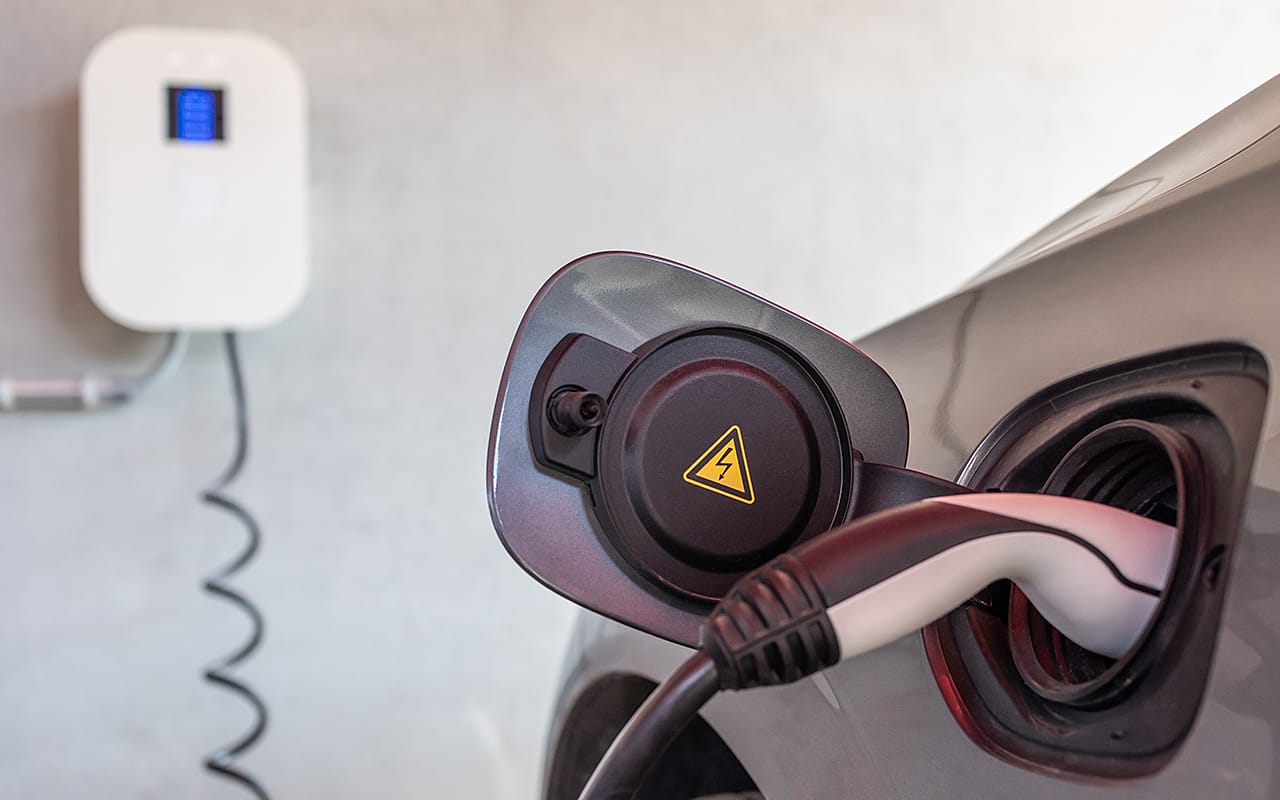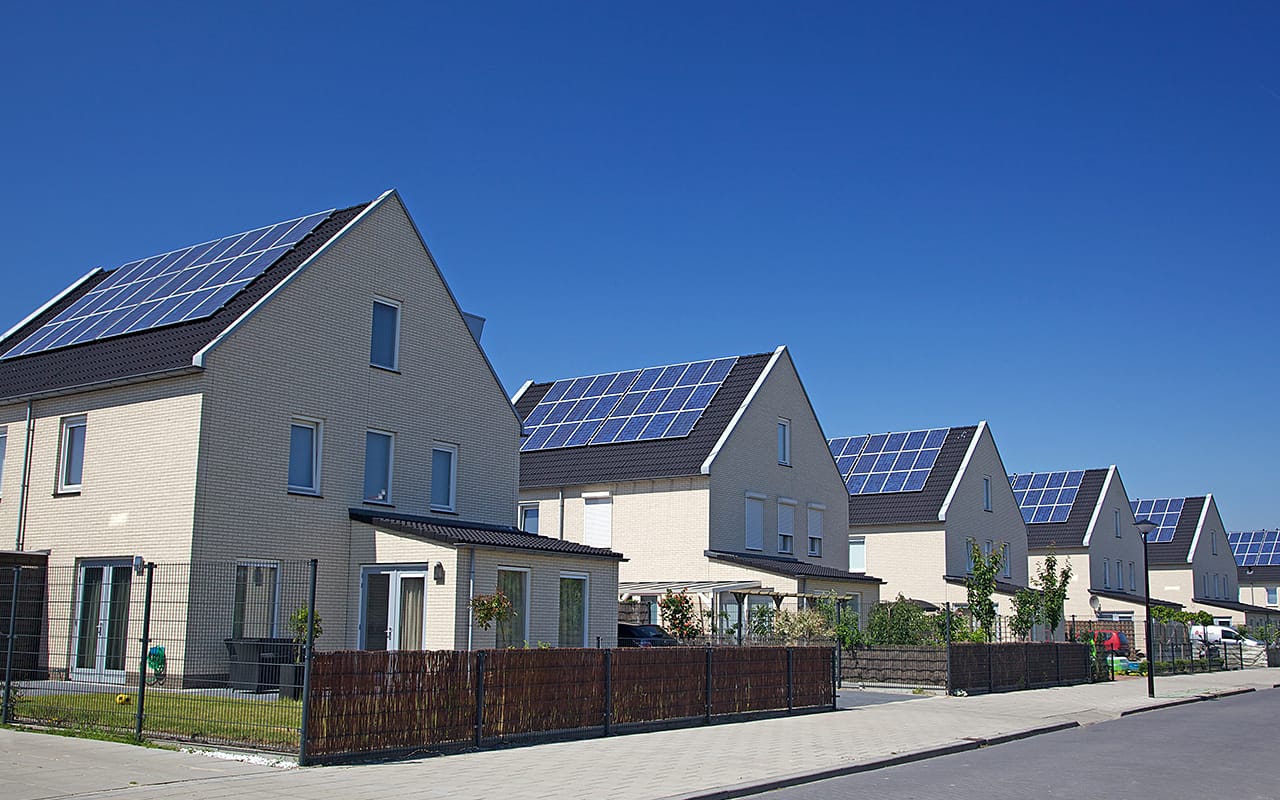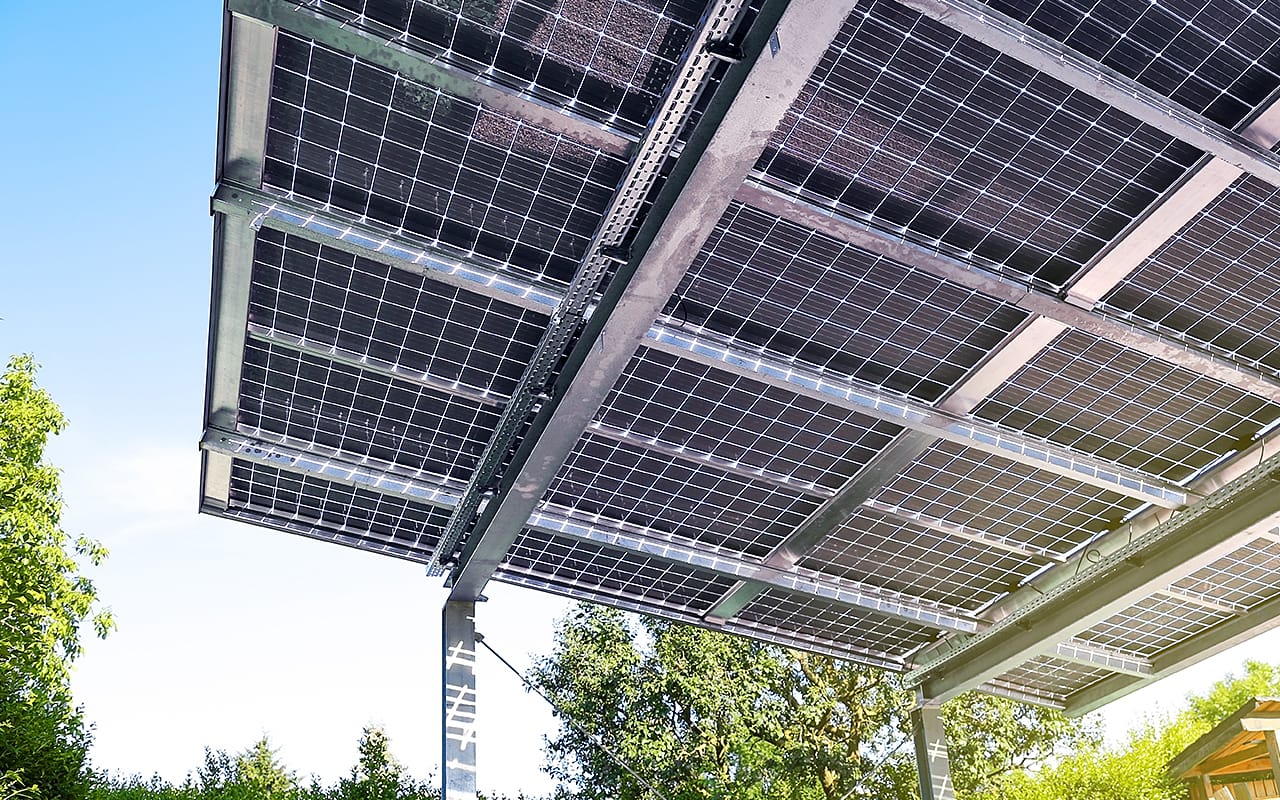Photovoltaic installation - what do I have to bear in mind?
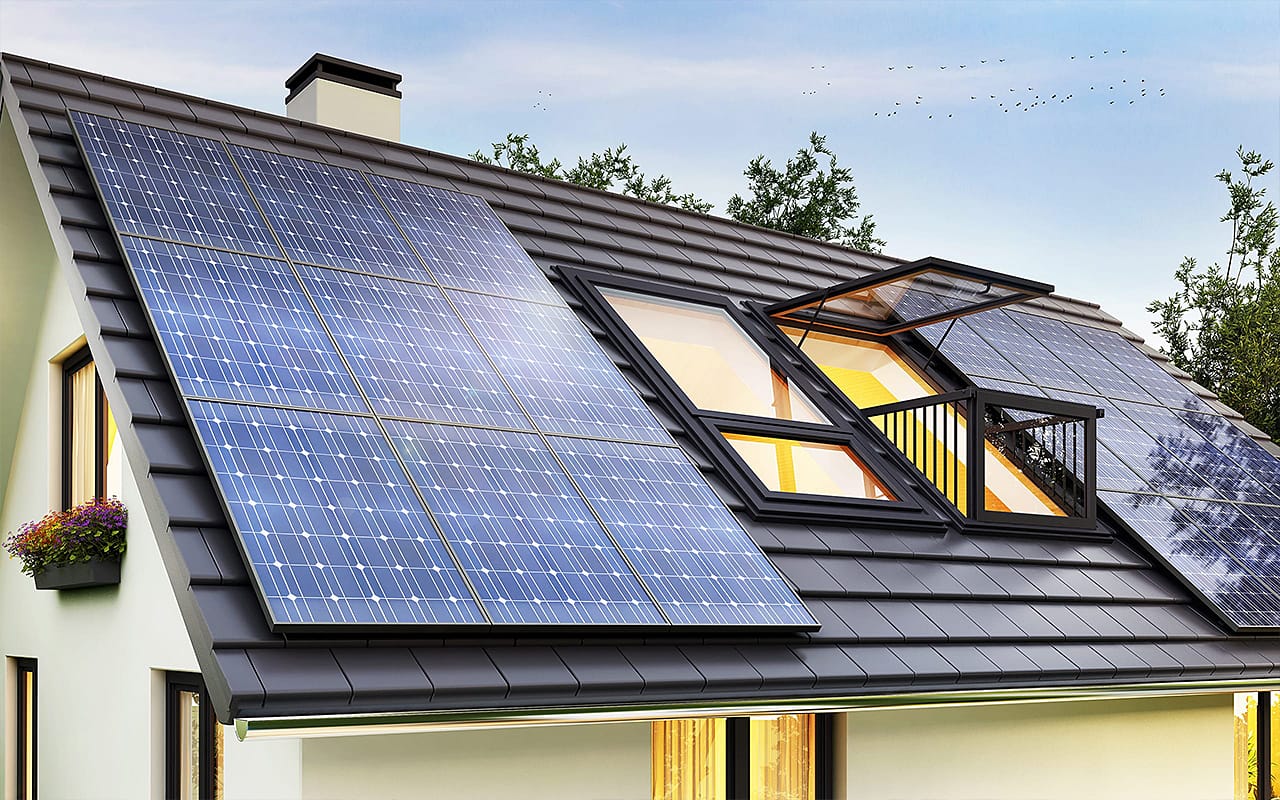
Are you thinking about installing solar modules on your house or building and wondering how photovoltaic installation actually works? Here you can find out what types of photovoltaic installation there are and what you should pay attention to.
Which roofs are suitable for the installation of photovoltaic systems?
Almost all roofs are suitable for the installation of a photovoltaic system without hesitation. It is important to consider the most important points during planning and installation. Your photovoltaic expert knows what these are and will ideally also support you with the photovoltaic installation. Flat roofs are particularly suitable, as they allow an optimal southern orientation.
Photovoltaic installation becomes more difficult on rounded roofs. Depending on the radius, the solar module may rest directly on the roof. This prevents photovoltaic installation on very small radii. A private house with a common roof, such as a gable roof, hipped roof or even a mansard roof, offers the optimal conditions for mounting a photovoltaic system.
What do you need to consider?
To ensure that you can use the new solar modules profitably and safely, you should observe the following criteria:
- The PV mounting system must be suitable for the selected modules.
- When selecting the mounting system, you must take wind and snow loads into account.
- During the installation of the system, a scaffold must ensure the safety of the installation team.
- The inverters should be mounted as close as possible to the feed-in point.
- You must register your photovoltaic system with the grid operator.
- A copy of the commissioning protocol provides you with legally secure proof.
Planning the photovoltaic system
You can use various software solutions to plan a photovoltaic system. This involves simulating what yield the system can produce and under what circumstances shading can occur. Such photovoltaic planning software should always include the most important parameters in the calculations.

The right alignment
The optimal orientation is an important planning element that provides information on how the photovoltaic system should be mounted. So that you can achieve the highest possible yield with the solar modules, the orientation should always be optimally selected.
Shading
Clarify in advance whether there will be shading of the roof area by dormers, trees or surrounding buildings and take this into account in your planning. Be careful when felling large trees to prevent shading. Find out beforehand whether it is permitted and what compensatory measures you may have to take. On a flat roof, shading can occur if the individual solar modules are too close together. In order for the PV system to realise its full potential, you must comply with the prescribed minimum distances.
Wind load
The wind load stresses both the solar modules and the mounting system. At the same time, the calculated value provides information about how close you can mount the modules to the edge of the roof. Basically, the higher the wind load, the greater the distance must be.
Snow load
When mounting photovoltaics, you must take the snow load into account. This is because the weight of the snow places a significant load on the modules. Normally, it slides off modules placed at an angle, but this is not always the case.
Sequence of PV assembly
Before the specialist begins with the photovoltaic installation, an on-site appointment is necessary. He will discuss the further procedure and plan the cable routing and similar details.
After the date for the installation has been set, a scaffold is erected a few days before the start. The photovoltaic installation itself takes about two to three working days in the case of a single-family house.
The installation begins with the site manager briefing the installation team. He will supervise the workflow until completion and explicitly approve each construction stage. This includes the mounting of the bracket components, the cable laying as well as the installation of the individual modules.
When installing your PV system, you should always make sure that it is installed safely and complies with fire safety regulations. It is also recommended that you use the components recommended by the manufacturer to fix the system. These have been tested for their load-bearing capacity and safety and therefore offer additional security.
Regulations
There are no legal regulations as to who may undertake the photovoltaic installation on a private building. However, this only concerns the installation of the solar modules and their substructure. The wiring and all electrical connections must be carried out by a qualified electrician.
Self-assembly or professional?
From a legal point of view, no expert is needed for photovoltaic installation on a private house. However, the installation is complicated and can become a real challenge for you. Especially if you have no previous experience in this area. Therefore, it is worthwhile to have the photovoltaic installation carried out directly by a specialist. After all, you have to make sure that all aspects regarding operational safety and fire hazard are observed. The technical know-how for professional photovoltaic installation is provided by solar installers, but also roofers and electrical engineers.
However, if you decide that you would rather do it yourself: Check in advance whether this will invalidate the manufacturer's warranty.
Mounting types: What types of photovoltaic mounting are there?
How the photovoltaic installation proceeds depends on the respective roof. For this reason, there are different mounting techniques for the solar modules depending on the type of roof. Because of these peculiarities, it makes sense that your choice falls on an installer who has already been able to gain versatile experience in this area. In itself, the number of procedures for photovoltaic mounting is manageable and must above all meet the requirements on site.
Video: Procedure of an PV installation on a tiled roof
Rooftop
On-roof mounting is the most widespread type of photovoltaic mounting. The individual modules are installed on different PV rooftop mounting systems, depending on the roof covering. The PV insertion system is particularly popular, as it can be used easily and cost-effectively on existing properties and ensures a closed module surface.
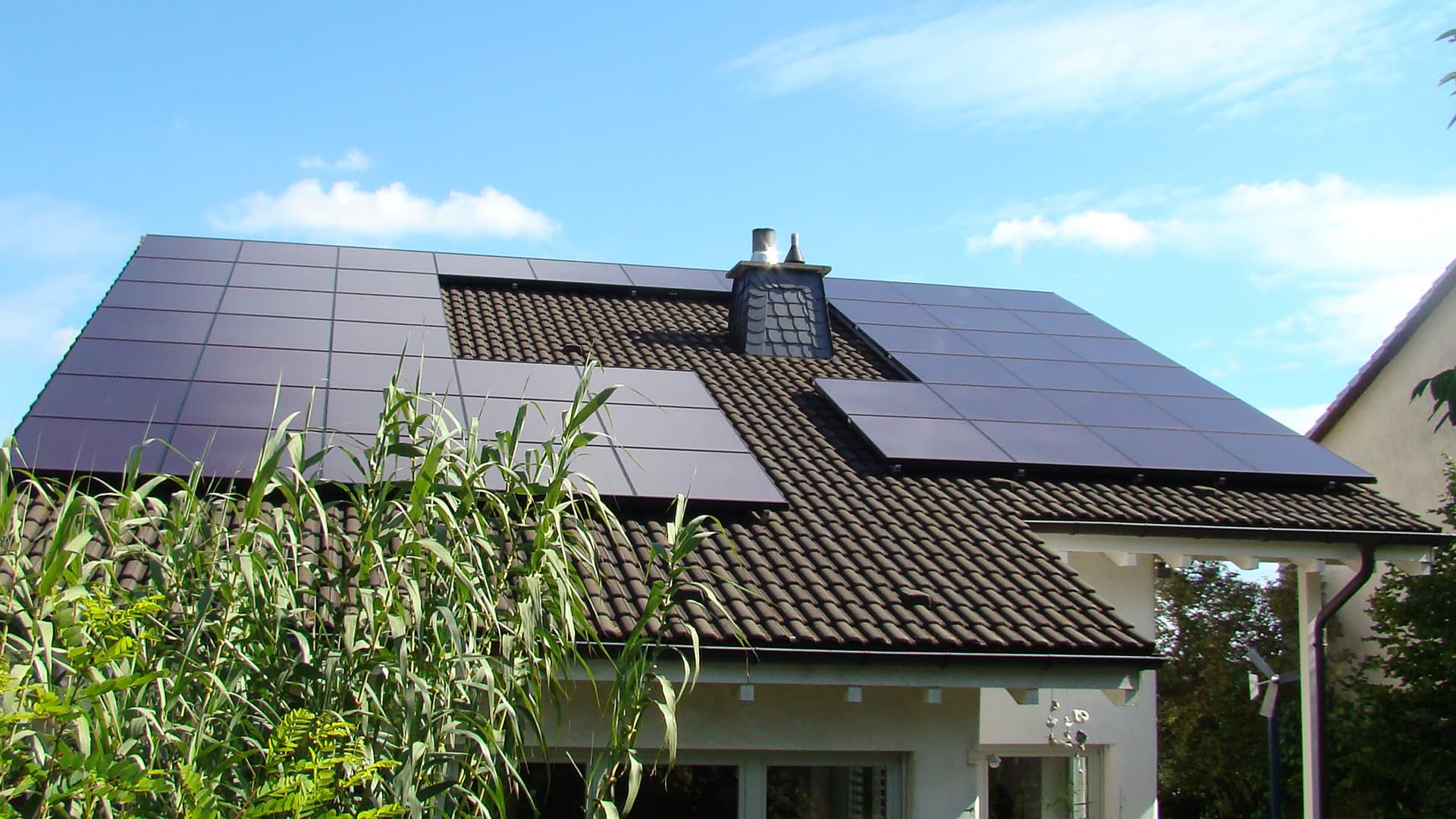
Indach
In-roof mounting is the most elegant type of photovoltaic mounting. It is the counterpart to on-roof mounting. Using an in-roof photovoltaic insertion system, the individual solar modules can replace the normal roof covering so that they seem to blend seamlessly into the roof covering. This installation is an option for you if you are building a new house, for example. This results in little extra work and a harmonious overall appearance. This type of photovoltaic installation is rarely suitable for an existing roof, as higher additional costs may be incurred.
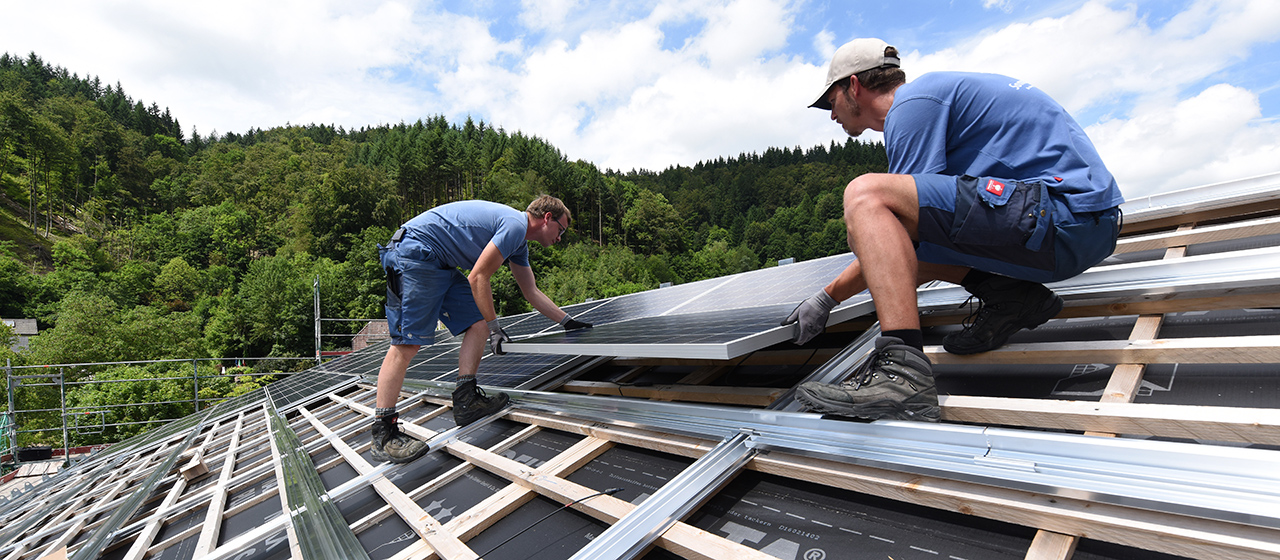
Flat roof
For photovoltaic mounting on flat roofs, a special PV clamping system for flat roofs is used. Equipped with profile rails and its own substructure, which can be aligned south or east-west, this type of mounting is particularly quick and uncomplicated.

Tin roof
The sheet metal roof has become one of the most popular roof coverings because it is particularly durable. Roofs with trapezoidal sheet metal roofing as well as standing seam sheet metal roofing and the corrugated roof are suitable as a basis for photovoltaic mounting with insertion systems, as they are extremely weather-resistant and extremely resilient.
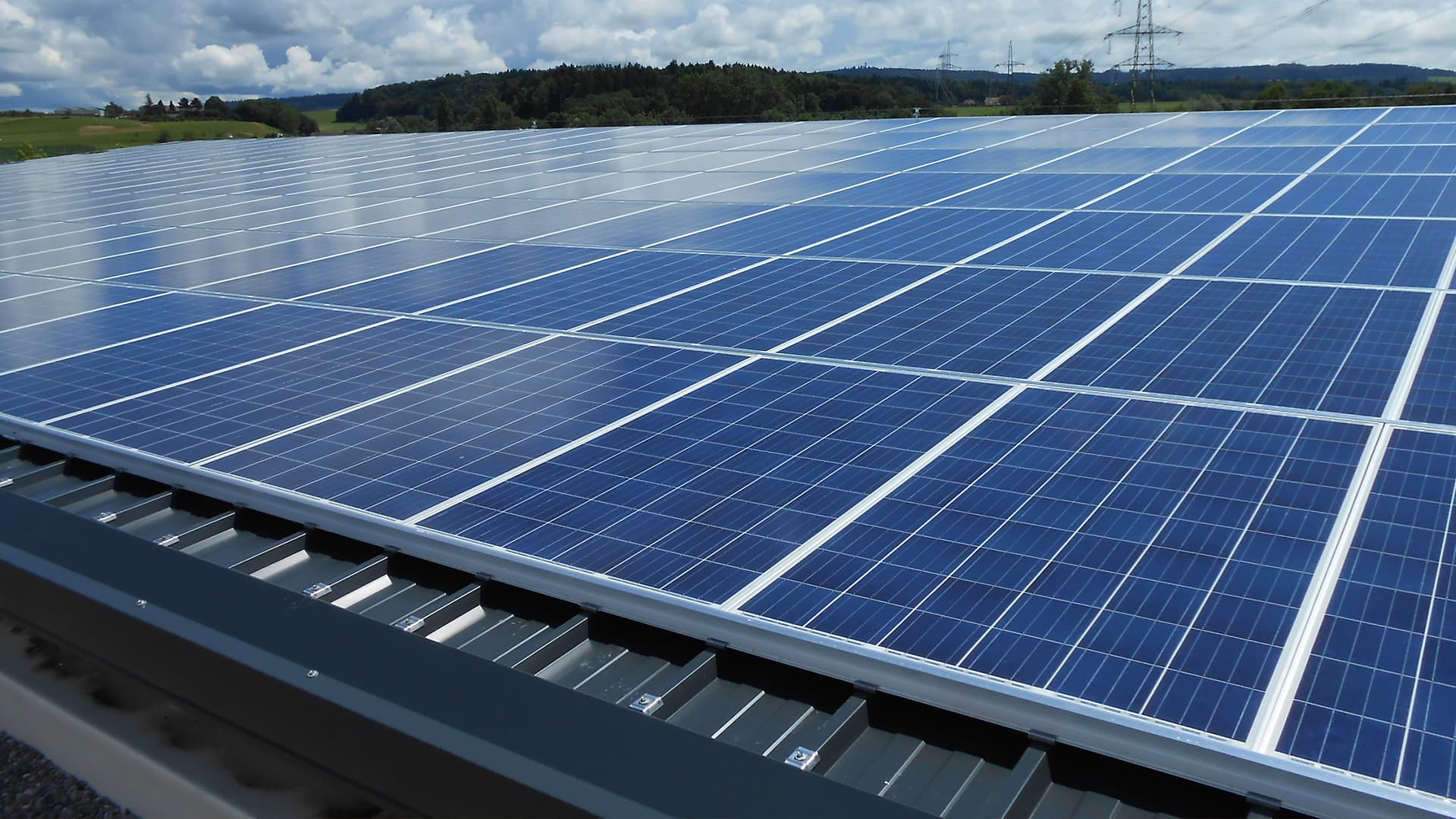
Solar roof tiles
Solar roof tiles are a special case of in-roof installation. Integrated into the roof, they create a harmonious overall appearance. However, they are not large-scale solar modules.
Facade
Photovoltaic mounting on façades, although futuristic in appearance, is not an architectural gimmick. In this way, you can achieve up to 70 percent of the output. With the right photovoltaic mounting system for fa çades, a subsequent addition of a photovoltaic system is possible without any problems.
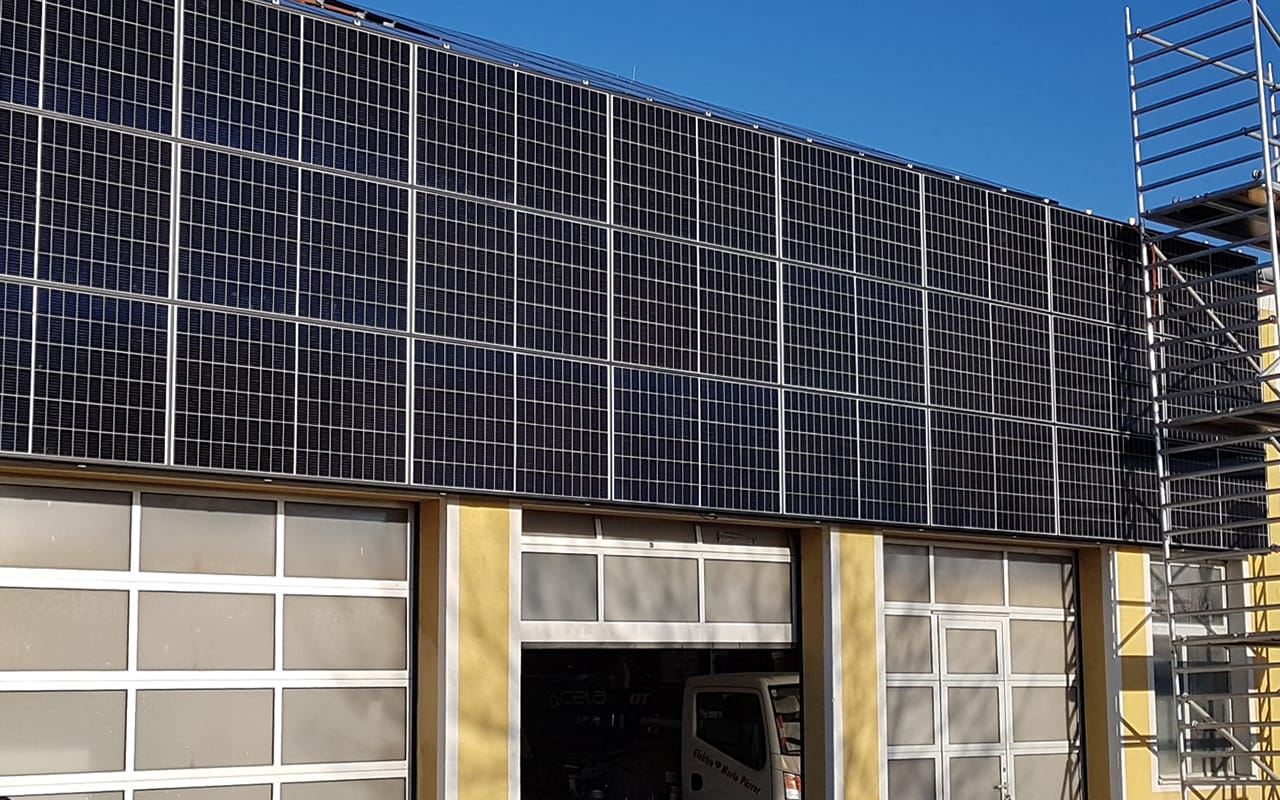
Installation of the PV system
If you operate a solar system privately, you may also carry out the photovoltaic installation yourself. However, the installation has its pitfalls and is quite complicated. If you are a layman in this field, it is better to rely on an expert.
In most cases, the photovoltaic installation is carried out by the same specialist company that you commissioned for the planning. This makes perfect sense, because you may encounter problems during photovoltaic installation, such as a loose-fitting roof tile or an unevenness. This is the reason why both manufacturers and suppliers recommend professional photovoltaic installation.
It pays to have the PV system installed by a specialist.
Errors related to photovoltaic installation can influence the performance of your PV system and at the same time affect its operational safety. Before you decide to undertake the photovoltaic installation yourself, you should familiarise yourself with the manufacturer's regulations. In some cases, warranty and guarantee claims are voided if a professional does not install the PV system.
The electrics must be done by an electrician
You must have electrical connections made by a registered electrician. For you, this means: You need a professional at the latest for the wiring.
About the author
TRITEC has specialised in the generation of solar power through photovoltaics for over 34 years. We are active worldwide in both photovoltaic wholesale and large-scale plant construction. In addition to our proven PV mounting system, we also offer our own intelligent system solutions for the planning, design and performance control of photovoltaic systems, as well as branded products from leading photovoltaic manufacturers.




